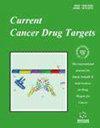The Necroptotic Process-Related Signature Predicts Immune Infiltration and Drug Sensitivity in Kidney Renal Papillary Cell Carcinoma
IF 2.3
4区 医学
Q3 ONCOLOGY
引用次数: 0
Abstract
Background: It remains controversial whether the current subtypes of kidney renal papillary cell carcinoma (KIRP) can be used to predict the prognosis independently. Objective: This observational study aimed to identify a risk signature based on necroptotic pro-cess-related genes (NPRGs) in KIRP. Methods: In the training cohort, LASSO regression was applied to construct the risk signature from 158 NPRGs, followed by the analysis of Overall Survival (OS) using the Kaplan-Meier method. The signature accuracy was evaluated by the Receiver Operating Characteristic (ROC) curve, which was further validated by the test cohort. Wilcoxon test was used to compare the expressions of immune-related genes, neoantigen genes, and immune infiltration between differ-ent risk groups, while the correlation test was performed between NPRGs expressions and drug sensitivity. Gene set enrichment analysis was used to investigate the NPRGs' signature’s biologi-cal functions. Results: We finally screened out 4-NPRGs (BIRC3, CAMK2B, PYGM, and TRADD) for con-structing the risk signature with the area under the ROC curve (AUC) reaching about 0.8. The risk score could be used as an independent OS predictor. Consistent with the enriched signaling, the NPRGs signature was found to be closely associated with neoantigen, immune cell infiltration, and immune-related functions. Based on NPRGs expressions, we also predicted multiple drugs potentially sensitive or resistant to treatment. Conclusion: The novel 4-NPRGs risk signature can predict the prognosis, immune infiltration, and therapeutic sensitivity of KIRP.坏死过程相关特征可预测肾脏肾乳头状细胞癌的免疫渗透和药物敏感性
背景:目前,肾脏乳头状细胞癌(KIRP)的亚型是否可用于独立预测预后仍存在争议。研究目的本观察性研究旨在确定基于 KIRP 中坏死原相关基因(NPRGs)的风险特征。方法在训练队列中,应用 LASSO 回归从 158 个 NPRGs 中构建风险特征,然后使用 Kaplan-Meier 法分析总生存期(OS)。通过接收者操作特征曲线(ROC)评估特征的准确性,并通过测试队列进一步验证。Wilcoxon 检验用于比较不同风险组间免疫相关基因、新抗原基因和免疫浸润的表达情况,而 NPRGs 表达与药物敏感性之间则进行了相关性检验。基因组富集分析用于研究NPRGs特征的生物功能。结果:我们最终筛选出 4 个 NPRGs(BIRC3、CAMK2B、PYGM 和 TRADD)用于构建风险特征,其 ROC 曲线下面积(AUC)达到约 0.8。风险评分可作为独立的 OS 预测指标。研究发现,NPRGs特征与新抗原、免疫细胞浸润和免疫相关功能密切相关。根据 NPRGs 的表达,我们还预测了多种可能对治疗敏感或耐药的药物。结论新型 4-NPRGs 风险特征可以预测 KIRP 的预后、免疫浸润和治疗敏感性。
本文章由计算机程序翻译,如有差异,请以英文原文为准。
求助全文
约1分钟内获得全文
求助全文
来源期刊

Current cancer drug targets
医学-肿瘤学
CiteScore
5.40
自引率
0.00%
发文量
105
审稿时长
1 months
期刊介绍:
Current Cancer Drug Targets aims to cover all the latest and outstanding developments on the medicinal chemistry, pharmacology, molecular biology, genomics and biochemistry of contemporary molecular drug targets involved in cancer, e.g. disease specific proteins, receptors, enzymes and genes.
Current Cancer Drug Targets publishes original research articles, letters, reviews / mini-reviews, drug clinical trial studies and guest edited thematic issues written by leaders in the field covering a range of current topics on drug targets involved in cancer.
As the discovery, identification, characterization and validation of novel human drug targets for anti-cancer drug discovery continues to grow; this journal has become essential reading for all pharmaceutical scientists involved in drug discovery and development.
 求助内容:
求助内容: 应助结果提醒方式:
应助结果提醒方式:


